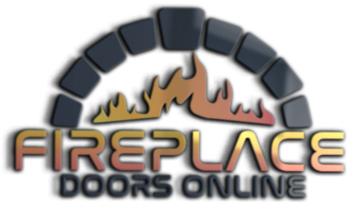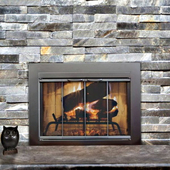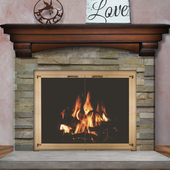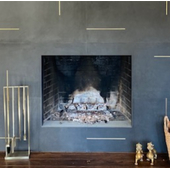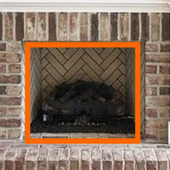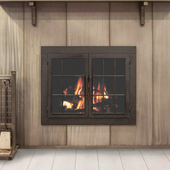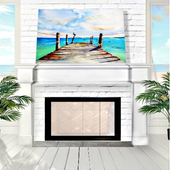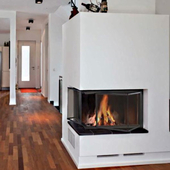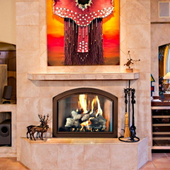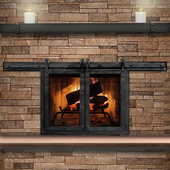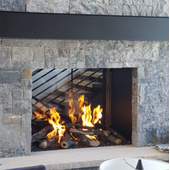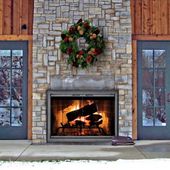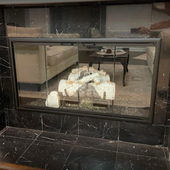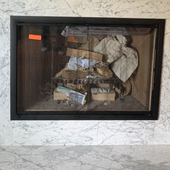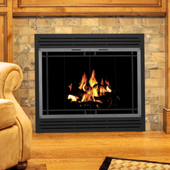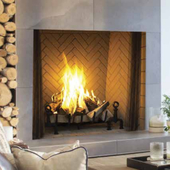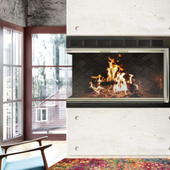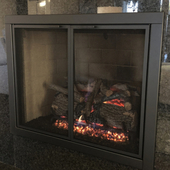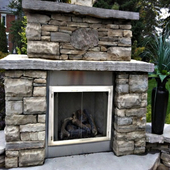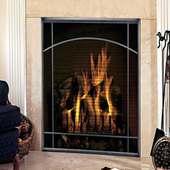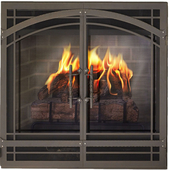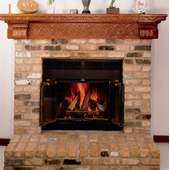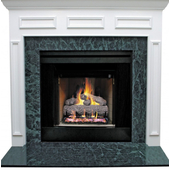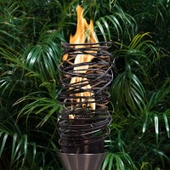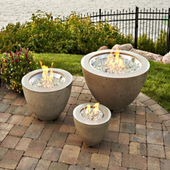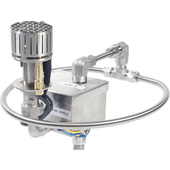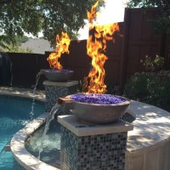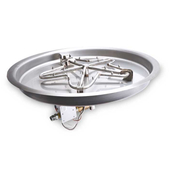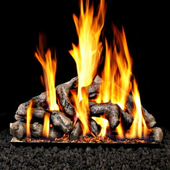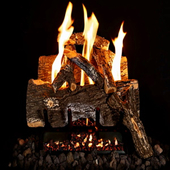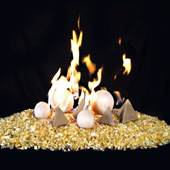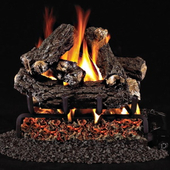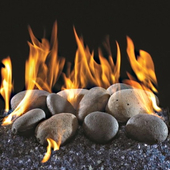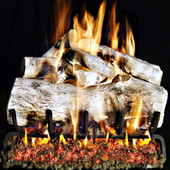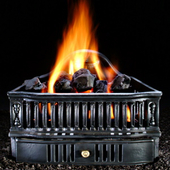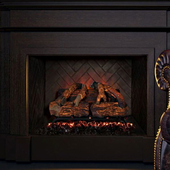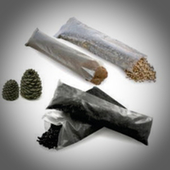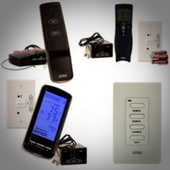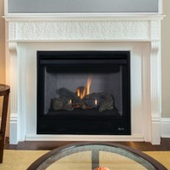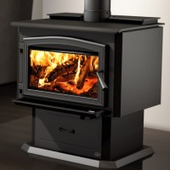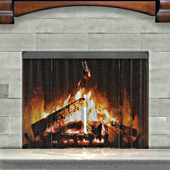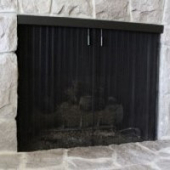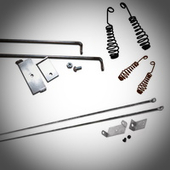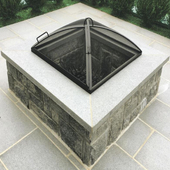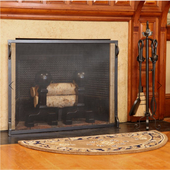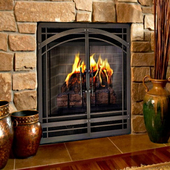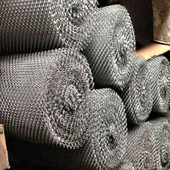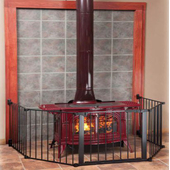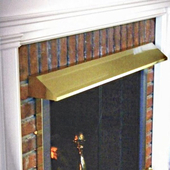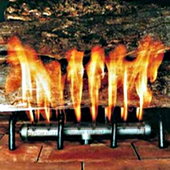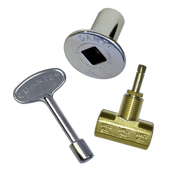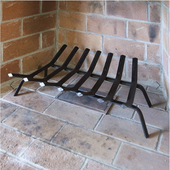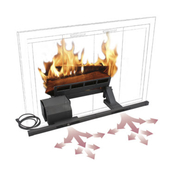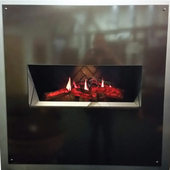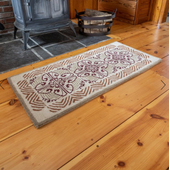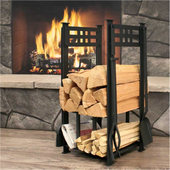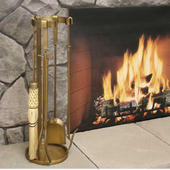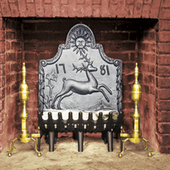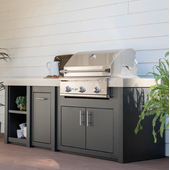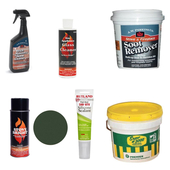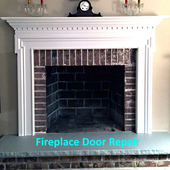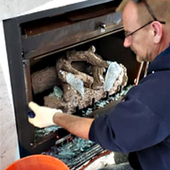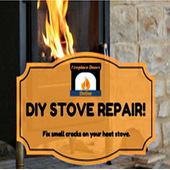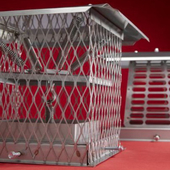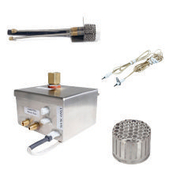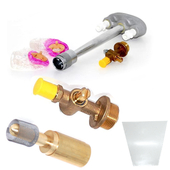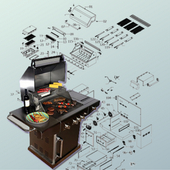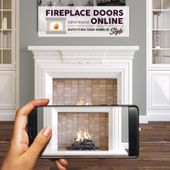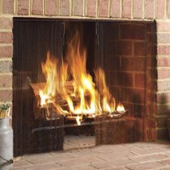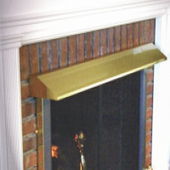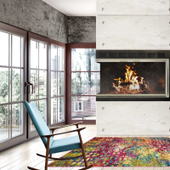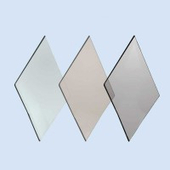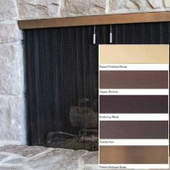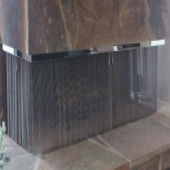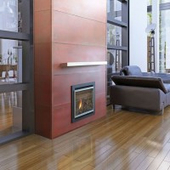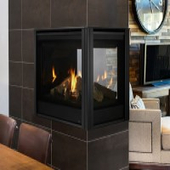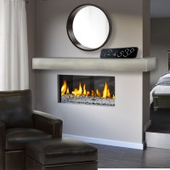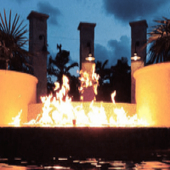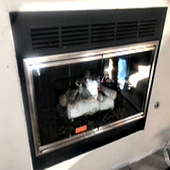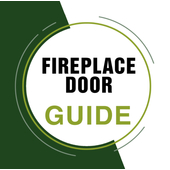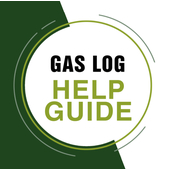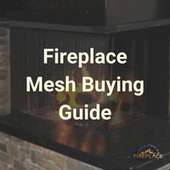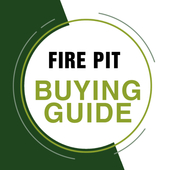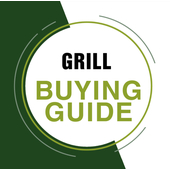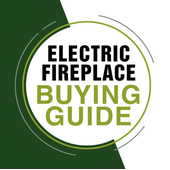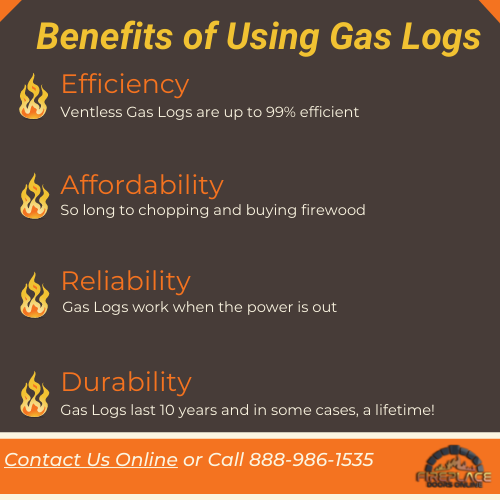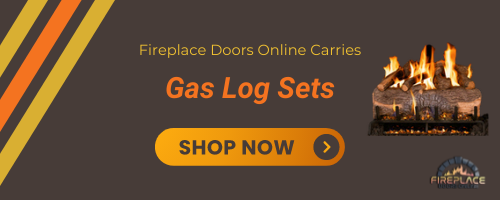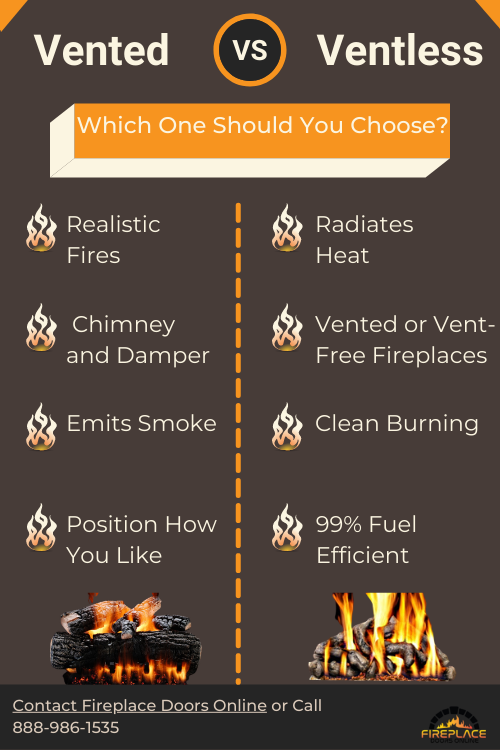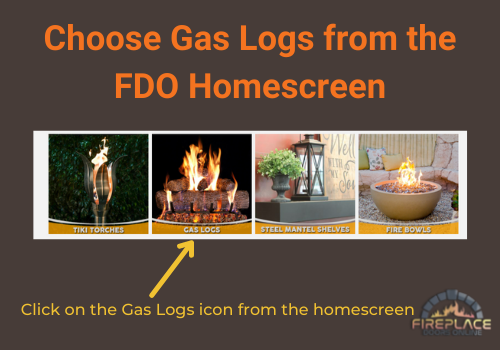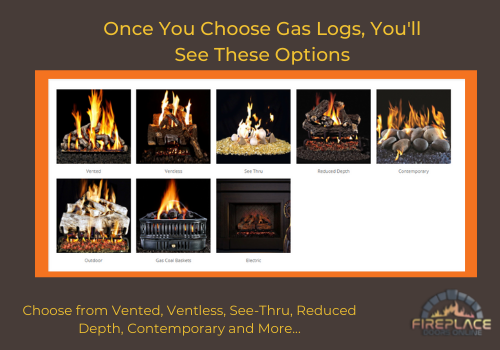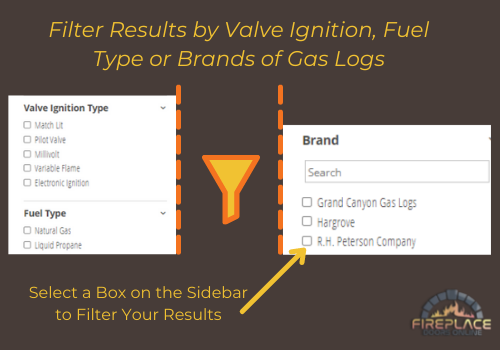-
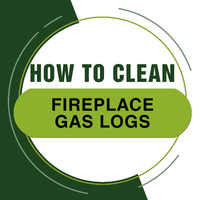 How To Clean Fireplace Gas Logs
How To Clean Fireplace Gas Logs
-
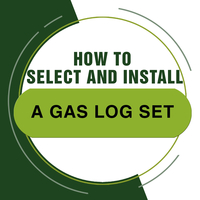 How To Select And Install A Gas Log Set
How To Select And Install A Gas Log Set
-
 Is It Safe to Use a Ventless Gas Log Set?
Is It Safe to Use a Ventless Gas Log Set?
-
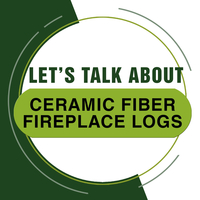 Exploring Ceramic Fiber Gas Logs
Exploring Ceramic Fiber Gas Logs
-
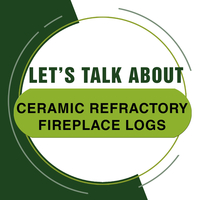 Exploring Reinforced Concrete Gas Logs
Exploring Reinforced Concrete Gas Logs
-
 Exploring Gas Log Set Ignition Systems
Exploring Gas Log Set Ignition Systems
-
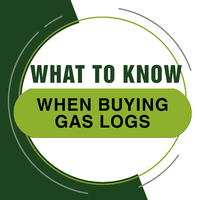 What To Consider When Buying Gas Logs
What To Consider When Buying Gas Logs
-
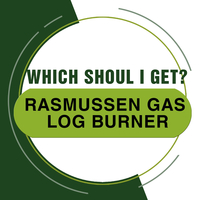 Which Rasmussen Gas Log Burner Should I Get?
Which Rasmussen Gas Log Burner Should I Get?
Gas Log Buying Guides
Gas logs are one of the most important accessories for your gas fireplace and your home in general. Whether you’ve recently converted your wood-burning fireplace to burn a gas fuel source and use gas logs or you just need a new or replacement set of gas logs for your existing fireplace, buying gas logs is a technical process. You’ll need the right knowledge to find the best set of logs to meet your needs.
To help you along on your buying journey, we’ve put together this gas log buying guide complete with everything you need for making an informed purchase. Here's what you'll learn from this gas log buying guide:
From identifying the types of fireplace logs you need to showing you how to measure your firebox for gas logs, we have you covered with everything you need to know about gas fireplace logs across this buying guide.
Gas logs are more than fake fireplace logs for your gas-burning fireplace, and they are designed for multiple purposes in your home. First, though, gas logs need a fuel source to operate in your gas-burning fireplace.
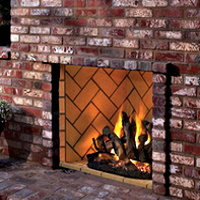 Burning gas logs takes a natural gas or liquid propane gas (LPG) running into your fireplace as the fuel source. Burning gas logs in your fireplace means you’ll need to have the right gas fireplace burner assembly and other hardware such as a log grate specifically designed for holding and burning gas logs.
Burning gas logs takes a natural gas or liquid propane gas (LPG) running into your fireplace as the fuel source. Burning gas logs in your fireplace means you’ll need to have the right gas fireplace burner assembly and other hardware such as a log grate specifically designed for holding and burning gas logs.
Gas logs don’t burn, the gas burns and the logs sit in the flames. Gas logs are typically made of ceramic or a refractory ceramic material and this is what allows them to withstand the intense heat of gas-burning fireplaces. Gas logs are vented or ventless, run on natural gas or propane fuel sources and come in different sizes and configurations to fit comfortably in your firebox. However, the first step to buying gas logs, and most fireplace accessories for that matter, is understanding the type of fireplace you have installed in your home.
When buying gas logs and shopping for a new gas log set, you’ll first need to know the type of fireplace you have installed – vented or ventless (vent-free). Although this sounds like a technical matter, it’s not hard to tell the difference in types of gas fireplaces. To help you with this, here’s a short overview of each type of gas fireplace and how to tell the difference.
Vented Gas Fireplace
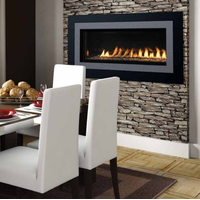 A vented gas fireplace has been converted from a wood-burning fireplace to a gas-burning fireplace. A wood-burning fireplace with a chimney and damper installed is considered a vented gas fireplace. The vented aspect is derived from the chimney and the damper.
A vented gas fireplace has been converted from a wood-burning fireplace to a gas-burning fireplace. A wood-burning fireplace with a chimney and damper installed is considered a vented gas fireplace. The vented aspect is derived from the chimney and the damper.
Keep in mind that these were once wood-burning masonry fireplaces that have had gas lines and burner assemblies installed. You’ll need to have the other hardware installed before you can burn gas logs in a wood-burning fireplace.
Vented gas fireplaces can burn both types of gas logs – vented and ventless. This makes your vented gas fireplace an incredibly diverse tool for your home and helps broaden your gas log search. You'll have many different options for gas logs when you have a vented gas fireplace.
Ventless Gas Fireplace
Ventless gas fireplaces are different from vented fireplaces in that they do not have a chimney with a damper installed, so these are vent-free, or ventless gas features. Ventless gas fireplaces are installed to burn only natural gas or propane, so these are not converted features.
Since these types of fireplaces don’t have a chimney with a damper installed, they’re often used for heating. The absence of a chimney with a damper allows the heat to radiate back into the room where they sit, so they make an excellent secondary heating source for your home. Ventless gas fireplaces can only burn ventless gas logs, so your options have been immediately narrowed down for you with one of these installed.
If you’re unsure about buying gas logs for your home, then consider some of the advantages or benefits of gas fireplace logs. Gas logs offer a range of different benefits for homeowners such as:
-
Efficiency: gas logs are an extremely efficient way to burn fires in your fireplace. Ventless gas logs are up to 99% fuel-efficient, meaning you’ll use 99% of the fuel burned without wasting it.
-
Affordability: gas logs are a great way to save money and time. You don’t have to spend money on expensive firewood or spend countless hours chopping and splitting firewood. You’ll also avoid spending your nights fighting to get the fire started or keep it going.
-
Reliability: gas logs are like other gas-burning accessories in your home, so they will work when the power is out.
-
Durability: gas log sets can last up to 10 years and when they’re regularly maintained, they can last a lifetime.
When you buy a quality set of gas logs for your home, you can expect these benefits. Many homeowners love their fireplace but hate the time it takes to build fires. Gas logs help you save time chopping firewood and money buying bundles of wood. The time that you’ll save from starting fires alone can oftentimes make buying gas logs worth the investment.
As you shop for gas logs, you’ll probably notice gas logs produced by popular brand names. There are a handful of popular brands of gas logs that you’ll come across time and time again. So to take out some of the guesswork for you, we’re going to break down the most popular brands of gas logs. To help you find the best gas logs for your home, the following are popular brands of gas logs:
-
RealFyre (R.H. Peterson)
-
Rasmussen
-
Hargrove
-
Grand Canyon
Due to the supply issues, many of these brands are currently out of gas logs and don’t know when they’ll get more in stock. Regardless, these are the big names in gas logs when you have the freedom to buy exactly what you’re looking for. When you see gas logs for sale from these manufacturers, you know you’re receiving a quality product.
You may have seen some mixed information online regarding the use of gas logs in your home and might wonder if gas logs are safe? The short answer is yes, gas logs are an incredibly safe option. Aside from being a safe alternative to burning firewood logs, gas logs are a safe option for many different uses including supplemental heating.
If you’re cautious about burning fake logs in your gas fireplace, then it’s important to know that gas logs are made of materials that make them ideal for fully handling the heat associated with a gas fireplace.
Gas logs are made of ceramic refractory or ceramic fibers that allow them to withstand the heat generated by a gas-burning fireplace. Gas logs are designed to look like real wood logs for burning in a fireplace.
Both vented and ventless gas logs are manufactured, molded, crafted and painted to closely resemble real wood logs. Vented gas logs are even designed to mimic real wood fires and burn like real wood logs. Now that you know more about gas logs, how they work and what they’re made of, it’s time to start learning about how to choose the best gas logs for your home.
The difference between vented and ventless gas logs is easy to understand. The important thing is identifying the type of gas fireplace you have, which will help you better understand vented vs vent-free gas logs.
Vented gas logs mimic real fires and even emit smoke as well as other byproducts as a result of combustion. Ventless gas logs are designed for heating purposes and do not emit smoke or other byproducts as a result of combustion.
Vented gas logs are designed for vented gas fireplaces with a chimney and a damper installed while ventless gas logs make an excellent supplemental heating option for your home.
Finding the best gas logs for your fireplace depends mostly on proper measurements. Measuring for a new set of gas logs is based on a few key measurements within your firebox. Gas logs need the right clearance on all sides of your firebox to operate properly.
Regardless if you have a masonry or prefab fireplace, you need to record these measurements in your firebox:
-
Front width: measure the opening from side to side.
-
Rear width: measure the very back floor of your firebox from side to side.
-
Height: measure the opening of your firebox from top to bottom. This is the height of the opening of your fireplace.
-
Depth: measure the floor of your firebox from front to back.
.png?1647975225385)
You can see from the diagram how to measure the dimensions of your firebox for gas logs. If you’re measuring a prefab fireplace for gas logs, you’ll need to make a slight adjustment for measuring your firebox.
.png?1647975264569)
It’s important to take the right measurements for your gas log sets. Gas logs require the right amount of clearance on all sides to operate the right way in your fireplace. You can follow this gas log chart to help you find the right size gas logs for your home.
|
Gas Log Size |
Firebox Front Width |
Firebox Rear Width |
Firebox Depth |
Firebox Height |
|---|---|---|---|---|
|
12 Inches |
16-24 Inches |
12 Inches Minimum |
12-14 Inches |
18 Inches |
|
13 Inches |
17-25 Inches |
13 Inches Minimum |
12-14 Inches |
18 Inches |
|
15 Inches |
19-27 Inches |
15 Inches Minimum |
12-14 Inches |
18 Inches |
|
16 Inches |
20-28 Inches |
16 Inches Minimum |
12-14 Inches |
18 Inches |
|
17 Inches |
21-29 Inches |
17 Inches Minimum |
12-14 Inches |
18 Inches |
|
18 Inches |
22-30 Inches |
18 Inches Minimum |
12-14 Inches |
18 Inches |
|
19 Inches |
23-31 Inches |
19 Inches Minimum |
12-14 Inches |
18 Inches |
|
20 Inches |
24-32 Inches |
20 Inches Minimum |
12-14 Inches |
18 Inches |
|
21 Inches |
25-33 Inches |
21 Inches Minimum |
12-14 Inches |
18 Inches |
|
22 Inches |
26-34 Inches |
22 Inches Minimum |
12-14 Inches |
18 Inches |
|
24 Inches |
28-36 Inches |
24 Inches Minimum |
12-14 Inches |
18 Inches |
|
26 Inches |
30-38 Inches |
26 Inches Minimum |
12-14 Inches |
18 Inches |
|
30 Inches |
34-42 Inches |
30 Inches Minimum |
12-14 Inches |
18 Inches |
|
36 Inches |
40-48 Inches |
36 Inches Minimum |
12-14 Inches |
18 Inches |
As we stated above, gas logs need the right amount of space on all sides to operate properly. This is where initially taking proper firebox measurements comes into play and makes that process all the more important. Before you can start shopping confidently for new gas logs, you’ll need to account for the following clearances:
-
Front width: your gas logs need 2-6 inches of clearance across both sides of the front of the firebox.
-
Rear width: the rear width of your firebox needs to be at least as long as your gas logs. For example, if your rear width is 18 inches, then your gas logs should be 18 inches or less, depending on other clearances.
-
Height: most gas logs require the height of your firebox to be at least 18 inches. This helps account for stacking your set of gas logs in the fireplace on top of the grate.
-
Gas accessories: it’s important to have enough clearance from other gas accessories in your fireplace. You’ll need to allow at least 3 inches from things like pilot lights and 6 inches on each side from millivolt pilots for remote control gas logs.
It’s important to elaborate on accounting for clearance from other gas accessories. When buying gas logs, you will have different options for pilot lights and other fire media.
Aside from the clearances mentioned above, accounting for clearance from pilot lights is an important consideration. You’ll need to add extra clearance for pilot lights as you progress through to more sophisticated types of lighting and burner systems.
Pilot lights for lighting gas logs need additional clearance on both sides, so as we stated above, be sure you’re allowing for enough clearance from your gas fireplace accessories. For example, if you’re using a match-lit gas log system, you’ll need to account for less clearance than if you were installing a millivolt system with a receiver. This is because the millivolt system contains more accessories that go inside the firebox than the basic match-lit system.
Once you have accounted for all the different clearances and measured your firebox for a set of gas logs, it’s time to choose the type of gas log set you want for your home.
Gas log sets in different designs and can have various types of fire media paired with them to create a unique burning experience. You’ll see different types of gas logs such as:
-
Vented
-
Ventless
-
See-thru
-
Reduced depth
We’ve already gone over the difference between vented and ventless gas logs, which are the two main types of gas logs, but from there you can get variations such as see-thru or reduced depth logs.
See-thru Gas Logs
See-thru gas logs are designed for two-sided fireplaces where you have doors or openings on two or more sides of your fireplace. See-thru sets are great for corner fireplaces or any other type of gas fireplace where you have one or more openings and you need your gas logs to look beautiful from multiple angles.
You can find vented and ventless see-thru gas logs, so they are designed for and made to accommodate different types of fireplaces. If you have a see-thru or peninsula fireplace with multiple viewing angles, then you’ll need a see-thru set of gas logs.
Reduced Depth Gas Logs
Reduced depth gas logs are designed to be smaller and weigh less than other ceramic refractory gas logs. You can choose from vented or ventless reduced depth gas logs and they’re ideal for fireplaces with a smaller opening where a reduced depth log is your only option.
Most gas logs require that your fireplace is at least 15 inches in depth, so anything less than this generally requires reduced depth gas logs. The great thing about reduced-depth gas logs is that you won’t have to sacrifice the heating power of ventless gas logs or the natural beauty of regular vented gas logs.
Finding the best gas logs to meet your needs takes having the right information and having the right measurements so you can confidently choose from the array of gas logs for sale. Now that you know what type of fireplace you have, how to measure and what to look for in the different types of gas logs for your home, it’s time to start shopping the Fireplace Doors Online (FDO) store for your new set of gas logs. To help, let’s quickly go over how to select the gas logs you want to buy from our store.
First, you want to choose gas logs from the heating category or select Gas Logs from the FDO home screen.
From there, you will see the following options for gas logs:
-
Vented
-
Ventless
-
See-thru
-
Reduced Depth
-
Contemporary
-
Outdoor
-
Gas Coal Baskets
-
Electric
Regardless of your selection from the list above, most all gas logs are either vented or ventless. After you select one of the options for gas logs from the list above, it’s time to filter your selection to find the right size set of gas logs for your fireplace.
Let’s say, for example, you know you need vented gas logs and chose the vented gas log option. From there, you can filter those results to show vented gas logs that match your fireplace’s criteria.
As you can see, you have the option to filter gas logs by the following criteria:
-
Brand
-
Fireplace Width, Depth or Height (separately)
-
Material
-
Valve Ignition Type
-
Log Size
-
Fuel Type
Filtering by fuel type will display results for either natural gas or propane gas logs. Choosing between fuel type and vented or ventless gas logs are your two main considerations when shopping for new or replacement logs for your fireplace. These two areas dictate the types of gas logs that will or won’t work in your fireplace, so getting these right is crucial to finding the right fireplace gas logs.
From there, you can filter by criteria such as valve ignition type and material to easily find the gas logs to meet your needs. Again, you’ll need to account for different clearances for the various types of valve ignitions such as match-lit and millivolt systems. Clearances from ignition systems can vary between different systems but generally range anywhere from 3-8 inches on each side of your gas logs.
To quickly review, you’ve already decided whether you need natural gas or propane and from there, whether you need a vented or ventless set of gas logs to match your type of fireplace. Now that you’ve made these two key choices, it’s time to filter those results to find the right size gas logs for your fireplace.
Finding the right size gas logs is easy with Fireplace Doors Online and we have different options for finding a new set of gas logs to match your measurements.
As you can see, gas logs are available in different sizes ranging from 16-30 inches. Of course, you can also use our handy gas log sizing chart to help you match your fireplace dimensions with the right set of gas logs.
Once you’ve selected the set of gas logs you want for your home, it’s nearly time to check out and complete your purchase. After you’ve selected a set that meets your needs, you’ll have a few more options from the product page.
The next step is to choose a fuel type plus any additional accessories to go with your new set of gas logs.
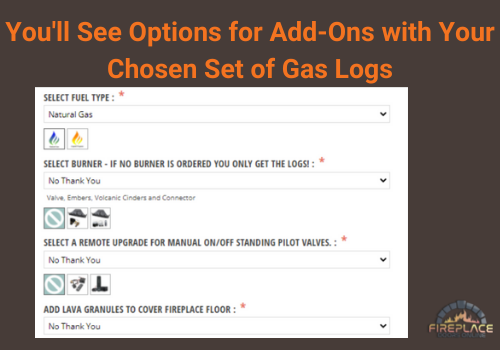
You can see that you’ll need to select a burner option, an option for a remote upgrade and some gas log sets include options for fire glass and other fire media to pair with your logs. These options help you create the fireplace experience you’re looking for without having to go through the entire buying process over again.
If you don’t make a selection for a burner system or a remote upgrade, then you will only receive the gas logs. This is great news for anyone shopping for a simple replacement set of gas logs and who already has a functioning burner system.
But, if you’re installing a brand new set of gas logs and you don’t already have the burner system set up in your fireplace, then you’ll want to choose a burner system option so your new gas logs are functional and can be burned after receiving them.
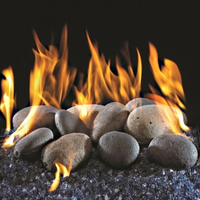 It’s important to note that not all gas log sets and products have options to include fire media such as fire glass or lava granules at checkout. You’ll also notice that not all gas log sets come with the same pilot valve options, either. Options for these are offered on a product-specific basis, so you’ll be able to see what’s available for your chosen gas log set once you’re on the product page in the FDO store.
It’s important to note that not all gas log sets and products have options to include fire media such as fire glass or lava granules at checkout. You’ll also notice that not all gas log sets come with the same pilot valve options, either. Options for these are offered on a product-specific basis, so you’ll be able to see what’s available for your chosen gas log set once you’re on the product page in the FDO store.
Many of the contemporary gas log sets utilize fire glass, so you’ll see options for different types and sizes of fire glass when you’re looking at one of those sets of gas logs. You can also purchase these items separately in the FDO store. You can also separately add gas log firebacks, ceramic fire balls and other fun fire media to create a one-of-a-kind gas fireplace experience.
Once you’ve made your selections, it’s time to checkout. If ever you want to go back to a previously viewed product but you can’t remember which one it was, you can see your recently viewed items located in the sidebar under the search filters.
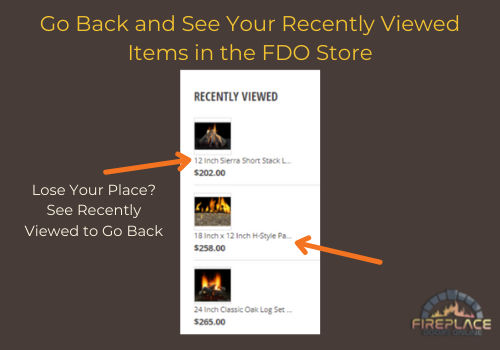
Once you’ve selected the set of gas logs you want for your fireplace and made all of the other selections for extras such as burner options and remote upgrades from the product page, the only thing left to do is checkout and get ready to enjoy your new set of gas logs.
Shopping for a new or replacement set of gas logs is a fun and exciting experience that takes a few key considerations before getting started. You’ll first need to identify the type of gas fireplace you have installed to accurately buy the right set of gas logs for your home. Next, you’ll need to determine your fuel type and determine whether you need vented or ventless gas logs for your fireplace.
To help you quickly understand gas fireplace logs, here are FDO's 4 rules for using gas logs:
-
Only use vented gas logs with vented fireplaces
-
Only use ventless gas logs with ventless fireplaces
-
You can use ventless gas logs with vented fireplaces as long as the damper is closed
-
You can not use vented gas logs with ventless fireplaces
These are four rules to follow when choosing the best set of gas logs for your home. As we outlined, the process goes a little deeper than that, and you’ll want to make sure you are checking other boxes such as buying the right size gas logs for your firebox. However, you can always follow these general guidelines for narrowing down your fireplace gas log choices and getting into the correct product page from the FDO home screen.
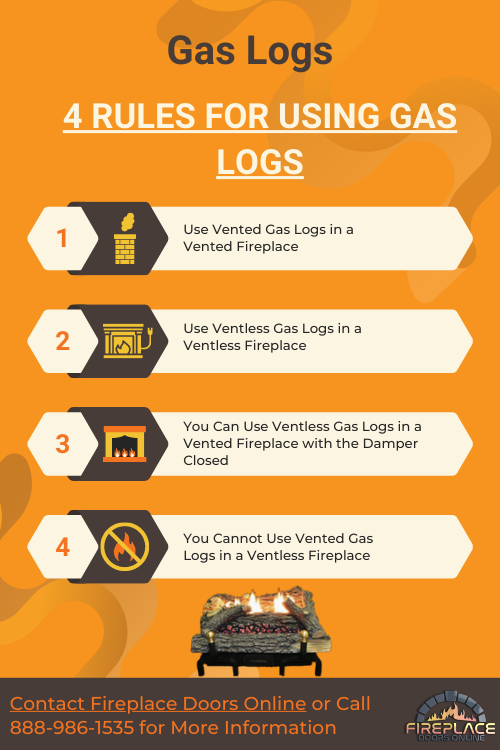
From here, buying the right gas logs for your fireplace starts with having a thorough understanding of your firebox setup and accounting for clearances. Accounting for clearances also includes the space you need to safely operate your gas logs from other gas fireplace accessories such as pilots or remote receivers mounted inside the firebox.
Once you’ve measured for gas logs and accounted for clearance, it’s time to make your selection from the FDO store. Using our refined search features to filter gas logs by size, brand or material just to name a few, you can further narrow down your choices to meet your needs and match your fireplace dimensions.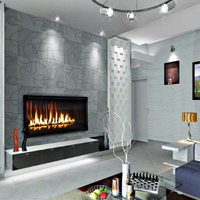
After you’ve selected a gas log set and navigated to the product page, there are only a few more considerations to make before finalizing your purchase in the FDO store. Most gas log sets offer you the option to add on a burner system or upgrade your system to use a remote control feature.
Last, some gas log sets include an option to add fire glass, volcanic granules or other fire media to your gas log order. Contemporary gas log sets have the most options as they all come with fire glass and allow you to choose the type and size of fire glass you want for your fireplace. You’ll make all of the necessary selections before entering your mailing and payment information at final checkout.
Contact Fireplace Doors Online for Your Gas Log Needs
We understand that buying new or replacement gas logs can be a taxing and stressful process that leaves you with more questions than answers. Hopefully, this buying guide will help take some of the guesswork out of the gas log shopping process and provide you with the information you need to make an informed decision. However, it’s natural to still have some lingering questions.
If you still have questions about the best gas logs to buy for your fireplace, feel free to contact us online or give us a call at 888-986-1535 and a member of our dedicated team of professionals will be happy to help!
